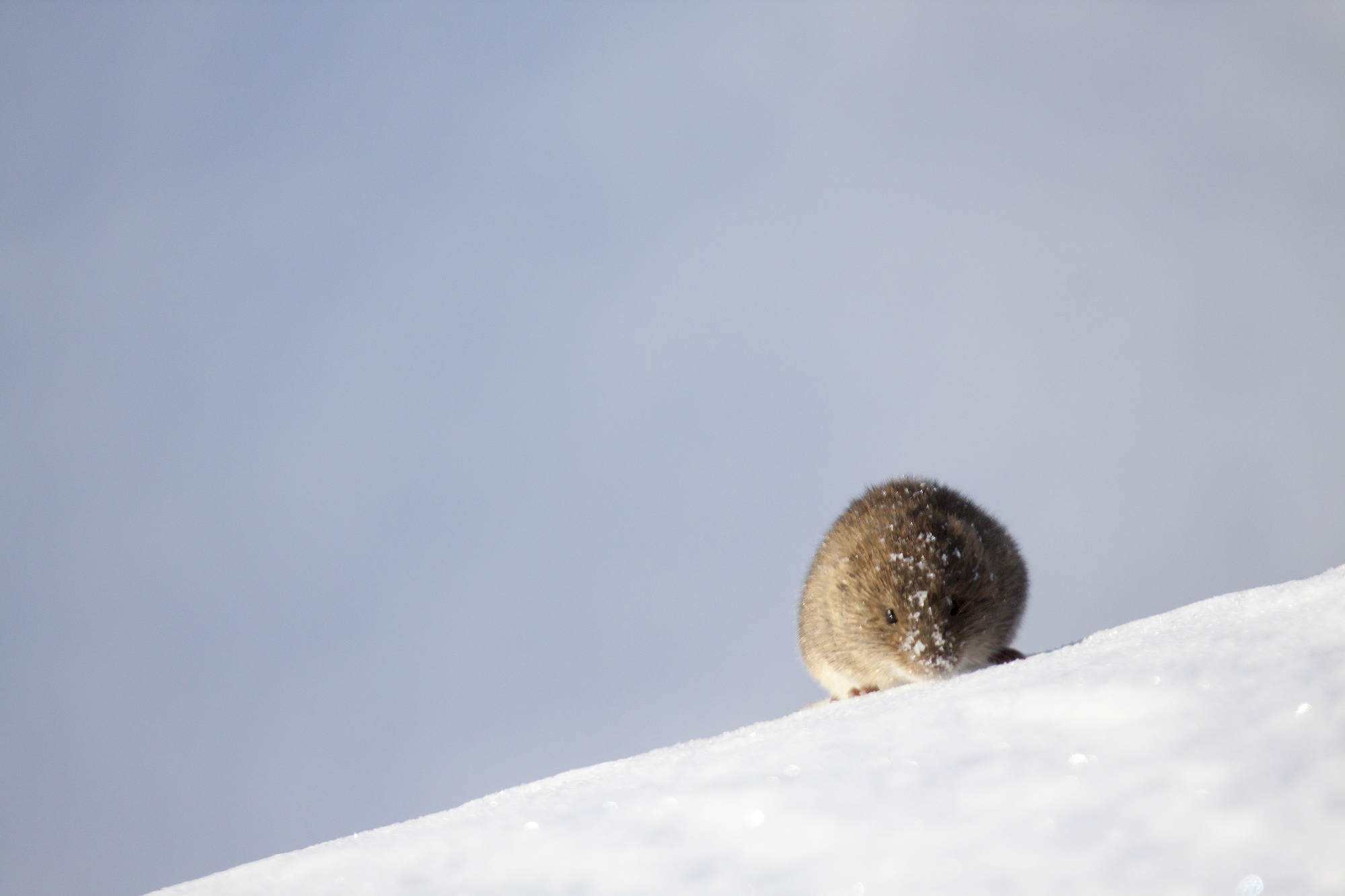

On a snowy winter’s day, you may see few, if any animals. Deciduous trees have shed their leaves, and shrubs will be bare but for the last chilly remnants of their spring and summer glory. Aside from the occasional sound of birds’ wings or a sighting of a foraging deer, a snowy landscape may seem as silent and barren as a dry desert.
But looks can be deceiving—and the snow that seems to put life on pause actually sustains it. Beneath the snow lies the subnivium, a busy microclimate where plants thrive and animals scurry to and fro.
This microhabitat turns traditional thinking about snow on its head. Once upon a time, the white, fluffy stuff was known only for making food scarce for above-ground animals, forcing many into hibernation, and turning into life-sustaining water after melting. But thanks to the emerging field of snow ecology, we now know that snowy environments have lives of their own.
Take the sheltered subnivium. Named for the Latin words for below (sub) and snow (nivis), the term refers to the tiny pocket between fallen snow and the ground itself. Its surprisingly constant climate can be much warmer than conditions above, protecting animals and plants insulated within.
“It’s a warm, stable pocket,” says ecologist Jonathan Pauli, a professor of forest and wildlife ecology at the University of Wisconsin–Madison. He coined the term along with his colleague Ben Zuckerberg in 2013.
The subnivium is fleeting, and only forms beneath snowfall at least six inches deep. There, between the soil below and the icy precipitation above, temperatures stay just above freezing—relatively warm and humid to animals who would be much chillier above the snowpack. The subnivium is so distinct from the wintry world up top that it’s considered a microclimate. “It’s so strikingly different from what’s happening just 15 to 20 centimeters above,” says Pauli.

The wintry world may seem devoid of animals. But beneath the snow, the subnivium teems with life. There are mosses, microorganisms like fungi, and even flowers like the glacier lily. And there are a surprising number of animals, including small rodents, porcupines, and birds. They tunnel around in the toasty subnivium, protected by the frosty blanket above them.
“Winter really feels like a quiet, dormant period,” says Pauli. “But there’s a lot of action happening. Plants can be active, they can be actively photosynthetic and can germinate. Some species of small mammals forage and even reproduce in this environment. Fungi are actively decomposing. Species like voles are active and are actively feeding. There’s a lot of action going on, it’s just invisible to us.”
Snow ecology is still a relatively new scientific field, partly because scientists took years to realize how much goes on beneath the blanket of flakes. But looks can be deceiving, and now researchers see snow as a medium that supports a complex food web, transports certain organisms through wind and water vapor, shields wildlife from radiation, and insulates them from the cold. In recognition of that important role, researchers from a variety of scientific disciplines joined forces in the early 1990s, arguing that snow ecosystems are worth sustained study.
Since these microhabitats can be disturbed by footsteps, ecologists must tread lightly—or not at all. Over the years, they’ve developed ways to spy on the subnivium, like placing tubes in the ground during warmer months and slipping ambient temperature loggers or cameras inside during winter.
Just like a sideways view of an ant farm reveals tunnels through the dirt, sub-snow data shows a refuge for animals and plants that scuttle, snuggle, and bloom beneath a blanket of snow. And by sustaining fungi in particular, we now know, the subnivium sets the stage for a fertile spring. Fungi fuel wildflowers and provide nutrients for plants once the snow melts.
But the subnivium is ephemeral, and it’s sensitive to the movements of larger organisms overhead. “It’s really temporary and sensitive to erosion,” says Pauli. And skis, snowmobiles and hiking boots aren’t the only things that threaten the microclimate. “It’s also sensitive to broader global environmental changes,” says Pauli. Translation: Scientists aren’t sure how climate change will affect the fragile wintry ecosystem.
Snow is part of the cryosphere—the portion of Earth’s climate system that also includes ice, frozen ground, and glaciers. The cryosphere offers one of the most visible indicators of climate change, and places with historically snowy, chilly winters are more susceptible to human-caused fluctuations than other places on Earth.
Seasonal snow is an important factor in local and global climates. On average, snow covers almost 18 million square miles of the planet each year. But climate change is upsetting that chilly balance. Snow cover is expected to decrease with a warmer climate, melting earlier each spring and sometimes melting and freezing into ice instead of snow, which can affect water supplies and animal habitats. As the world warms, climate scientists also expect more intense snowfall fueled by pockets of warm air. But as the BBC’s Colin Barras notes, that won’t necessarily translate into more snowfall overall. Instead, scientists predict more extreme snowfall events, but shorter snow seasons and less snowy weather over time.
“Winters are going to be different in many different places as we move forward,” he writes.
If snowfall lessens, that means the conditions needed to create and maintain subnivia will become less common. So far, Pauli’s research has revealed more temperature variability in the subnivium and, ironically, lower temperatures than usual due to a lack of insulation usually provided by deeper snows. That could lead to colder soils in the winter, which means animals that rely on snow as a refuge will likely experience more temperature-related stress.
The subnivium still provides a much-needed haven… for now. But as winters get shorter and warmer, that newly-appreciated microclimate—and the benefits it provides plants and animals—might disappear forever.
